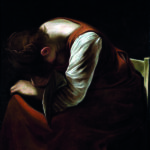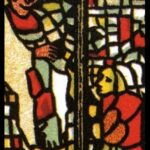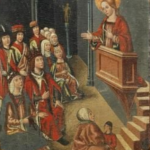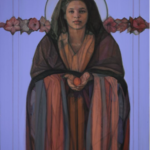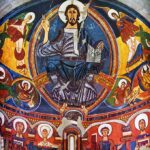For the last month I’ve been doing a bit of a survey of the books on my shelves, rereading some that I wanted to reacquaint myself with, starting to work through some that have been languishing unread, and thinking through some ideas that I’ve had simmering on the proverbial back burner. But I’ve also had the good fortune to come across new scholarship and new ideas that I find compelling, and today I came across something that I wanted to share as soon as possible: Mary Magdalene in African American spirituals.
M. Shawn Copeland, Professor Emerita, Boston College Department of Theology, gave a lecture in 2021 during Boston College’s 12th annual Mary of Magdala Celebration, which I just finished watching. In it she gives some context about the environment in which African American spirituals were created, and about the religious life of the people that composed them. She describes a culture in which a new kind of Christian oral tradition had emerged, with reinterpretations of the stories and passages heard during church services, made applicable to the lives of those who heard them. Lyrics for spirituals were created, more or less improvisationally, as people perceived being moved by the Holy Spirit.
Professor Copeland notes that of the fourteen individuals from the Gospels that are named in various spirituals, four were women: Mary of Nazareth, Mary and Martha of Bethany, and Mary Magdalene. In those songs that feature Mary Magdalene, it is usually her role as first witness of the resurrection and bearer of the Gospel news that is highlighted. A few songs are included in Professor Copeland’s presentation, with lyrics, to highlight how Mary Magdalene was viewed.
I found the analysis of the song “Mary Rolled The Stone Away,” with its surprising image of Mary Magdalene as the one who opened the tomb, to be the most powerful. (Emphasis is mine.)
In Mark’s gospel, Mary Magdalene along with three companions bring along embalming paraphernalia to wash and treat the body of Jesus. As they walk, the women wonder aloud, ‘Who will roll away the stone for us?” Peering through the murky dawn, the women see that the stone has been rolled away (Mark 16:1-4). The spiritual credits Mary Magdalene with rolling away the stone; indeed, before the angel can arrive, Mary has taken care of business. Recall, Jesus’ words: “Truly I tell you, if you say to this mountain, ‘Be taken up and thrown into the sea,’ and if you
do not doubt in your heart, but believe that what you say will come to pass, it will be done for you” (Mark 11:23). Mary moves that very large stone through loving faith; she believes in Jesus and she loves him. Mary’s ardent and powerful love rolled the grave stone away.Enslaved women, at great physical and psychic cost, pitted themselves
“Run, Sister, Run: The Figure of Mary Magdalene in the Negro Spiritual” Presented on July 23, 2021 by M. Shawn Copeland https://www.bc.edu/bc-web/schools/stm/sites/encore/main/2021/run-sister-run/_jcr_content.html
against threats and obstacles for the sake of their children. An emancipated woman, Fannie Moore told her interviewer that on the plantation where she was held, the overseer “hated my mother,” because her mother would fight with him whenever he beat Fannie or her siblings. Like Mary, enslaved women moved obstacles, pushed aside stones of every sort that physically or mentally sought to hinder their objectives. These women did not wait for someone else to come along, but acted!
There was only a brief mention in the presentation of the role played by spirituals in the coordination and preparation of escape to freedom, so I did a bit of additional reading. It is amazing to me that Mary Magdalene running to tell the disciples the good news of the resurrection could be interpreted in a way that gave courage to individuals to seek freedom, spiritually and/or physically.
John 20:1 Early on the first day of the week, while it was still dark, Mary Magdalene went to the tomb and saw that the stone had been removed from the entrance. 2 So she came running to Simon Peter and the other disciple, the one Jesus loved, and said, “They have taken the Lord out of the tomb, and we don’t know where they have put him!”
“Run, Mary, Run,” was mentioned in the presentation but not included; I was glad to find this performance:
In one article I found on African American spirituals “Run, Mary, Run” is very clearly identified as a song with a double meaning:
The spirituals are often recognized as carrying “coded messages” understood by the Blacks who sang them but not necessarily by owners or enforcers. Songs such as “Wade in the Water,” “Go Down Moses,” and “Follow the Drinking Gourd,” served unsuspected purposes of alerting slaves that an opportunity to escape was close by. Other songs, like “Run, Mary, Run” and “Oh Freedom”–which respectively included the lines “You got a right to the tree of life” and “Before I be a slave, I’ll be buried in my grave”–reflected and fed courage to resist slavery by both internal and external means.
“You got a right to the tree of life: African American spirituals and religions of the diaspora..” The Free Library. 2007 Association for Religion and Intellectual Life 14 May. 2023 https://www.thefreelibrary.com/You+got+a+right+to+the+tree+of+life%3a+African+American+spirituals+and…-a0168215080
While the version in the video above contains a very unambiguous statement of entitlement to a better life (“Run Mary run / You’ve got a right to the Tree of Life”), an alternate version expresses instead a certainty that there is a better life waiting.
Run, Mary, run
“Run, Mary, Run” Learning for Justice https://www.learningforjustice.org/classroom-resources/texts/hard-history/run-mary-run
Run, Mary, run
Oh, run, Mary, run
I know de udder world is not like dis
The song was so well known that even Samuel Coleridge-Taylor created an arrangement, published in 1905 as part of his work 24 Negro Melodies, Opus 59.
I’m grateful to Professor Copeland for her lecture, and to Boston College for making it available online. It’s refreshing to hear of yet another perspective on Mary Magdalene, and how the narrative of her discovery of the empty tomb was interpreted by enslaved African Americans. It inspires me to know that in spite of being cast as a penitent, which some have argued made her a tool for the oppression of people, she emerged in this case as a model of powerful love and freedom.
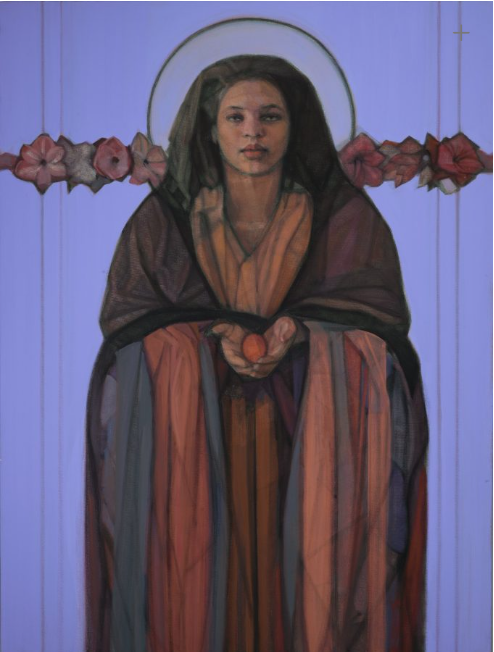
Featured image: Mary Magdalene – Invitation to Love, by Janet McKenzie. Used by permission.
